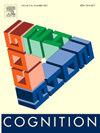再说一遍,你会更快:或者语言产生系统如何跟踪共现现象
IF 2.8
1区 心理学
Q1 PSYCHOLOGY, EXPERIMENTAL
引用次数: 0
摘要
语言系统允许几乎无限的组合,但说话者倾向于使用一些词的组合比其他更多。我们可以直观地认为,这些概率被注册并用于更容易地选择即将出现的单词。本研究旨在验证这一假设。参与者在一系列图片命名训练之前和之后使用形容词和名词来命名图片。在训练过程中,一半呈现的图片保持不变,而另一半则以新的组合方式保持相同数量的形容词和名词的出现。重复短语训练后的命名延迟减少约40毫秒。实验2重复了这些结果,并表明在没有额外暴露的情况下,它们在一天后仍然可以观察到。实验3表明,这些影响不能仅仅通过图片曝光来降低。这些发现挑战了主流心理语言学模型的重要假设。他们认为,语言产生系统直接记录单词共现现象,并将这些信息存储一段时间。我们讨论了这些影响的一个帐户,其中单词表征之间的连接强度是基于直接共现。值得注意的是,这些结果为语言产生中驱动概率效应的机制的详细调查和建模开辟了道路。本文章由计算机程序翻译,如有差异,请以英文原文为准。
Say it again, you'll be faster: Or on how the language production system keeps track of co-occurrences
The linguistic system allows for an almost infinite number of combinations, but speakers tend to use some word combinations more often than others. It would be intuitive to assume that these probabilities are registered and used to make the selection of upcoming words easier. The present study was designed to test this assumption. Participants named pictures using an adjective and a noun before and after a series of picture naming training sessions. During training, half of the presented pictures remained the same, while the other half were altered to maintain the same number of adjective and noun occurrences in novel combinations. The decrease in naming latencies after training is about 40 ms larger for repeated phrases. Experiment 2 replicates these results and shows that they are still observed after a day without additional exposure. Experiment 3 shows that these effects cannot be reduced to mere picture exposure. These findings challenge important assumptions of dominant psycholinguistic models. They suggest that the language production system registers direct word co-occurrences and stores the information for some time. We discuss an account of these effects in which connection strength between word representations are based on direct co-occurrence. Notably, these results open the way for detailed investigations and modeling of the mechanisms that drive probabilistic effects in language production.
求助全文
通过发布文献求助,成功后即可免费获取论文全文。
去求助
来源期刊

Cognition
PSYCHOLOGY, EXPERIMENTAL-
CiteScore
6.40
自引率
5.90%
发文量
283
期刊介绍:
Cognition is an international journal that publishes theoretical and experimental papers on the study of the mind. It covers a wide variety of subjects concerning all the different aspects of cognition, ranging from biological and experimental studies to formal analysis. Contributions from the fields of psychology, neuroscience, linguistics, computer science, mathematics, ethology and philosophy are welcome in this journal provided that they have some bearing on the functioning of the mind. In addition, the journal serves as a forum for discussion of social and political aspects of cognitive science.
 求助内容:
求助内容: 应助结果提醒方式:
应助结果提醒方式:


